The insect world is filled with creatures that seem to defy our earthly expectations. With approximately 900,000 known insect species—and potentially millions more yet to be discovered—Earth’s six-legged inhabitants display an astonishing diversity of forms that sometimes appear more extraterrestrial than terrestrial. From bizarre appendages and otherworldly defensive mechanisms to fluorescent colors and peculiar reproductive strategies, these tiny beings can seem like visitors from another planet. This article explores 15 insects whose appearances are so strange they might make you wonder if they truly belong in our world. Each of these fascinating creatures represents evolution’s remarkable creativity, showcasing adaptations so extreme and unusual that they challenge our understanding of life on Earth.
Orchid Mantis (Hymenopus coronatus)

The Orchid Mantis stands as nature’s perfect deception artist. Native to the rainforests of Southeast Asia, this remarkable insect has evolved to mimic orchid flowers with such precision that it appears more like a botanical specimen than an animal. Its body segments are shaped like flower petals in vibrant white and pink hues that can change intensity depending on its surroundings. The insect’s limbs are flattened and leaf-like, with delicate frills that further enhance its floral disguise. What makes the Orchid Mantis particularly alien is its ability to attract pollinators not by mimicking the appearance of orchids, but by actually appearing more attractive to insects than real flowers. Research has shown that they reflect ultraviolet light in patterns that pollinators find irresistible—essentially functioning as “super flowers” that lure prey directly to their deadly, lightning-fast front limbs.
Giant Water Bug (Lethocerus americanus)

The Giant Water Bug earns its alien reputation through both its appearance and its disturbing hunting tactics. Growing up to 4 inches in length, these formidable predators have flat, oval-shaped bodies adapted for cutting through water with minimal resistance. Their front limbs have been modified into powerful grasping appendages that resemble alien pincers, which they use to capture prey many times their size, including fish, amphibians, and even small water birds. Perhaps their most alien characteristic is their feeding method—they inject digestive enzymes into their prey, liquefy the internal organs, and then suck out the resulting nutrient soup. Adding to their otherworldliness, male Giant Water Bugs in some species carry eggs on their backs until hatching, an unusual form of parental care in the insect world. In parts of Southeast Asia, these insects are considered a delicacy, known as “toe-biters” due to their painful bite that can pierce human skin.
Lanternfly (Fulgora laternaria)
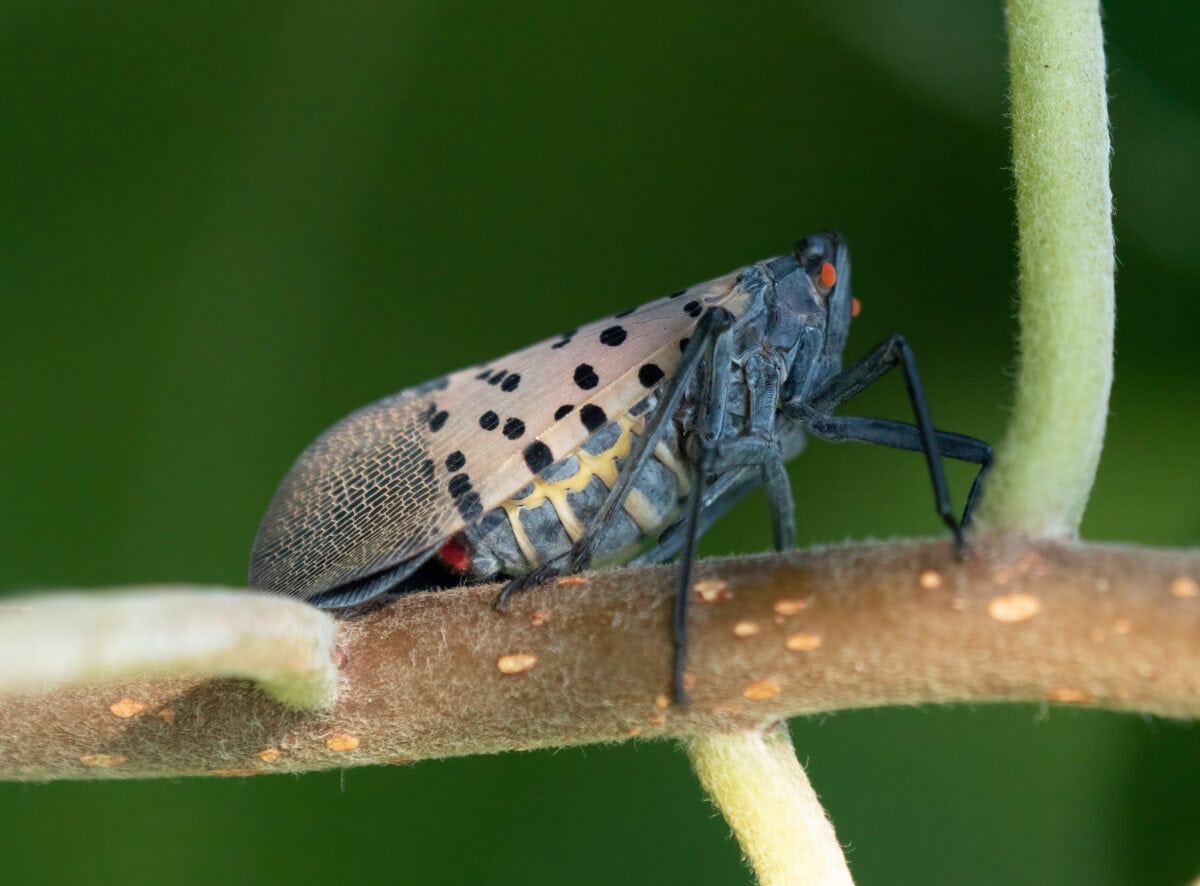
The Lanternfly, or Peanut-headed Bug, possesses one of the most bizarre head structures in the insect kingdom. Native to the rainforests of Central and South America, this creature sports an enlarged, hollow protrusion from its head that resembles an elongated peanut shell or, more eerily, the head of a small alligator complete with fake eyes and textured skin. Early naturalists mistakenly believed this structure could emit light (hence the name “lanternfly”), but its actual purpose appears to be defense through mimicry—possibly resembling the head of a caiman to deter predators. Adding to its alien appearance, the lanternfly has large, semi-transparent wings adorned with eye-spots and intricate patterns that can span up to 3 inches. When threatened, it can spread these wings to reveal vibrant red and yellow hindwings that create a startling display. The combination of its bizarre head structure and dramatic wing coloration makes the lanternfly appear more like science fiction than an actual Earth species.
Assassin Bug (Reduviidae family)

The Assassin Bug earns its place among alien-looking insects through both its appearance and its macabre hunting behaviors. With over 7,000 species worldwide, these predatory insects possess a distinctive curved proboscis (rostrum) that folds under their body when not in use—but when hunting, this specialized mouthpart extends forward like an alien appendage to pierce prey and inject a potent saliva that both paralyzes and liquefies internal tissues. Some species, like the masked hunter, camouflage themselves with debris, dust, and the carcasses of their victims, creating a grotesque disguise that makes them appear like walking piles of detritus with legs. Perhaps most unsettling are the “kissing bugs” of this family, which feed on the blood of mammals (including humans) by biting near the mouth while the victim sleeps. The zombie-like appearance of debris-covered assassin bugs, combined with their lethal hunting techniques and bizarre feeding appendage, creates an impression straight from science fiction horror.
Thorn Bug (Umbonia crassicornis)
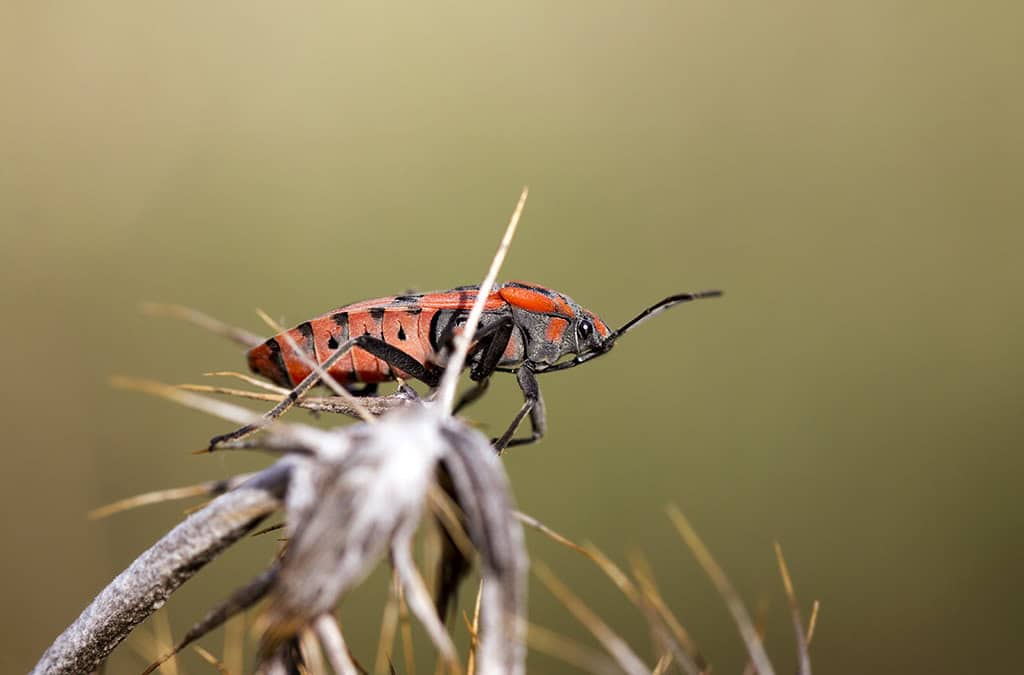
The Thorn Bug appears more like a plant structure than an animal, showcasing one of evolution’s most convincing disguises. This remarkable insect has developed a thorny, thorn-like protrusion on its back (technically an enlarged and modified pronotum) that perfectly mimics the thorns found on rose stems and other plants. This adaptation serves not just as camouflage but also as protection against predators who might think twice before attacking what appears to be a sharp plant defense structure. Native to the tropical regions of the Americas, thorn bugs range in color from bright green to mottled brown, allowing them to blend seamlessly with their host plants. Their alien quality is enhanced by their unusual movement pattern—they tend to gather in groups on plant stems and, when disturbed, will coordinate their movements to circle around the stem in unison, creating an unsettling synchronized display. Adding to their otherworldly nature, female thorn bugs guard their egg masses and newly hatched nymphs—unusual parental care for an insect—making soft vibrating sounds to communicate with their offspring.
Giant Leaf Insect (Phyllium giganteum)

The Giant Leaf Insect represents one of nature’s most extraordinary examples of evolutionary mimicry, with a body so perfectly leaf-like that it challenges the boundary between plant and animal. These remarkable creatures, native to Southeast Asia, can grow up to 4 inches long and possess flattened, leaf-shaped bodies complete with intricate vein-like patterns, irregular edges that mimic leaf damage, and even transparent patches that resemble leaf holes. Their legs feature leaf-like extensions that help complete the disguise by eliminating the telltale silhouette of limbs. What makes leaf insects particularly alien is their movement behavior—they sway gently when walking, mimicking a leaf rustling in the breeze, and often remain motionless for hours or even days at a time. Even their eggs contribute to their otherworldly nature, as they resemble plant seeds and are scattered individually to the forest floor by the female. Perhaps most remarkably, leaf insects can change their coloration over time, shifting between green and brown hues to match seasonal changes in their environment—a slow-motion transformation that seems more like science fiction than biological reality.
Hercules Beetle (Dynastes hercules)
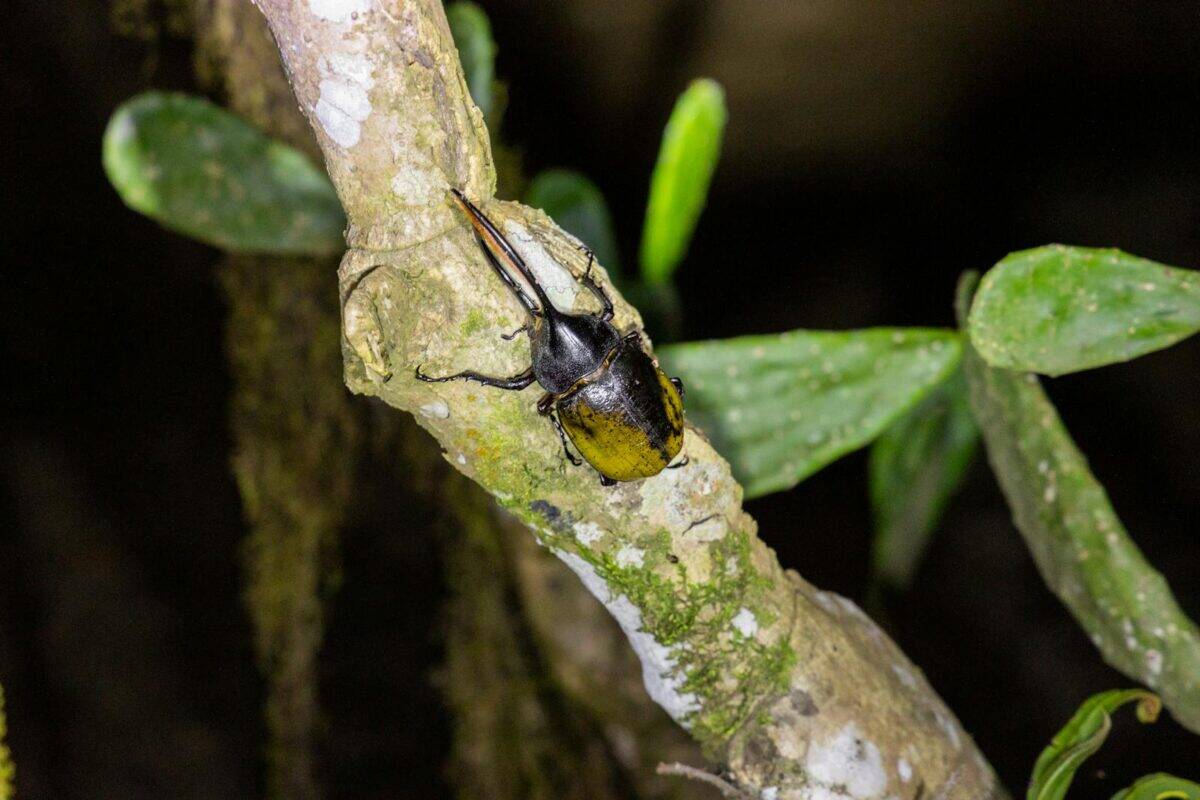
The Hercules Beetle stands as one of the most impressive and alien-looking insects on Earth, bearing a resemblance to armored vehicles from science fiction. As one of the largest flying insects in the world, male Hercules beetles can reach lengths of up to 7 inches, including their most distinctive feature—enormous horn-like pincers that extend from both the thorax and head. These impressive structures, which can be longer than the beetle’s body, are used in spectacular battles with other males for mating rights, where they can lift opponents weighing 8 times their body weight. Their alien appearance is enhanced by their remarkable exoskeleton, which changes color depending on humidity—shifting from greenish-yellow to black as conditions change. This color-changing ability seems almost technological rather than biological. Native to the rainforests of Central and South America, these beetles possess disproportionate strength, capable of carrying up to 850 times their body weight—the equivalent of a human lifting 65 tons. Their life cycle adds to their otherworldly nature: before reaching their impressive adult form, they spend years as large grub-like larvae living inside rotting wood, undergoing a radical metamorphosis that transforms them from soft-bodied creatures into armored giants.
Spiny Flower Mantis (Pseudocreobotra wahlbergii)
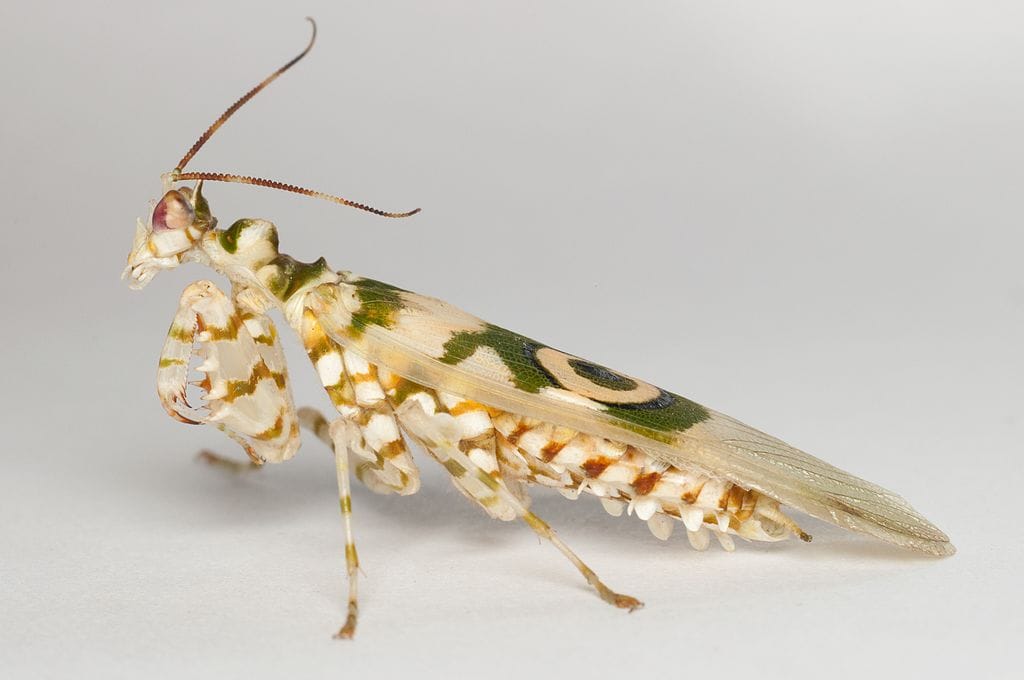
The Spiny Flower Mantis appears more like a character from an alien fairy tale than an Earth-evolved insect. Native to southern Africa, this small but striking mantis measures only about 1.5 inches long but commands attention with its elaborate appearance. Its body is adorned with leaf-like protrusions and spines that create a distinctive crown-like structure around its thorax and abdomen. What truly sets this mantis apart is its spectacular coloration—bright white and green base colors accented with spiraling patterns that culminate in eye-spots resembling hypnotic yellow and black bull’s-eyes on its wings. These dramatic markings aren’t just for show; when threatened, the mantis spreads its wings in a deimatic display, revealing these startling patterns to confuse and deter predators. Even its front legs, which it uses for capturing prey, are decorated with spines and colored patterns that break up its silhouette. Young nymphs are even more alien in appearance, with bright orange and black coloration that changes with each molt until they reach their adult form. The mantis’s unusual appearance is complemented by its hunting behavior—it remains perfectly still, sometimes swaying gently like a flower in the breeze, until prey comes within striking distance of its lightning-fast front limbs.
Giant Burrowing Cockroach (Macropanesthia rhinoceros)

The Giant Burrowing Cockroach defies typical cockroach stereotypes, appearing more like a prehistoric or alien creature than its common relatives. Native to Australia, these impressive insects can grow up to 3 inches long and weigh up to 1.2 ounces, making them the heaviest cockroaches in the world. Unlike the flattened profile of common household cockroaches, these giants have robust, rounded bodies protected by thick, glossy exoskeletons in rich mahogany and black hues that resemble polished armor. What makes them particularly alien is their specialized anatomy—they lack wings entirely, have powerful, shovel-like legs for digging, and possess enlarged heads with ridge-like structures reminiscent of rhinoceros horns (hence their scientific name, “rhinoceros”). Their alien quality is enhanced by their unusual lifestyle—they can live for up to 10 years, an extraordinary lifespan for an insect, and spend most of their lives underground in complex tunnel systems that can extend several feet deep. Perhaps most surprising is their ecological role: unlike their garbage-eating relatives, these cockroaches are critical to their ecosystem as they consume dead leaves on the forest floor and return nutrients to the soil, effectively functioning as “soil engineers.” Their young develop inside a specialized pouch on the female’s abdomen, an unusual form of parental care that seems more mammalian than insect-like.
Giraffe Weevil (Trachelophorus giraffa)
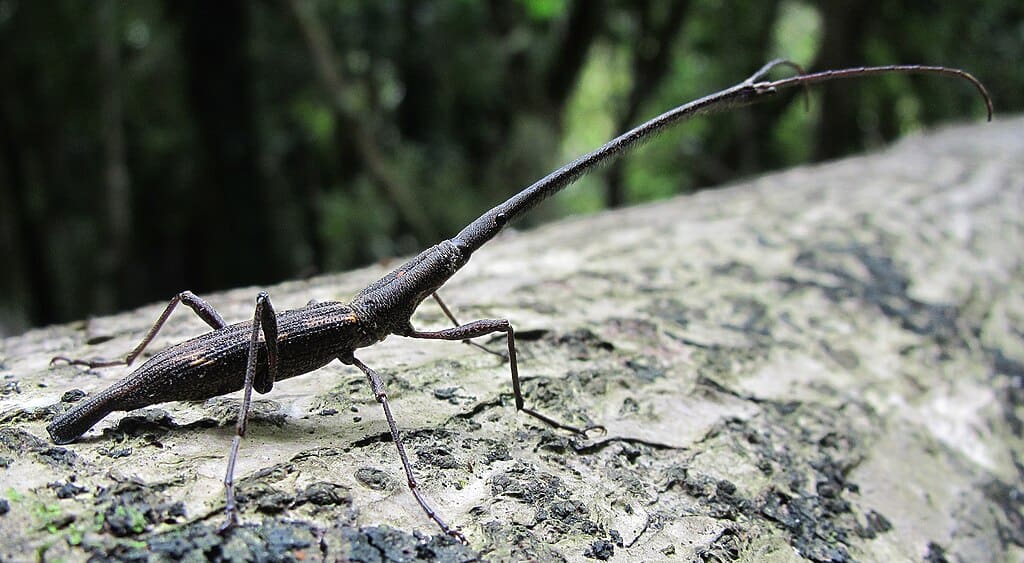
The Giraffe Weevil presents one of the most disproportionate and alien body structures in the insect world. Endemic to Madagascar, this remarkable beetle is defined by its most distinctive feature—an extraordinarily elongated neck (technically an extended thorax) that can be longer than the rest of its body. This neck-like structure creates an immediate resemblance to its namesake mammal and gives the insect an otherworldly silhouette unlike anything typically associated with beetles. The elongated neck is primarily found in males, where it serves a specific purpose—during mating season, males use their extended necks in wrestling matches to compete for females, with the longer-necked individuals generally gaining advantage. The weevil’s alien appearance is enhanced by its striking coloration—a glossy, metallic red that stands out dramatically against the green leaves of their forest habitat. Adding to their unusual characteristics, female giraffe weevils demonstrate remarkable engineering skills when reproducing: they roll and fold leaves into intricate tubes using precise cuts and folds, then lay a single egg inside each leaf structure before cutting it free to fall to the forest floor. This complex reproductive behavior, combined with their improbable anatomy, makes the giraffe weevil seem more like a product of imagination than evolution.
Mantidfly (Mantispidae family)
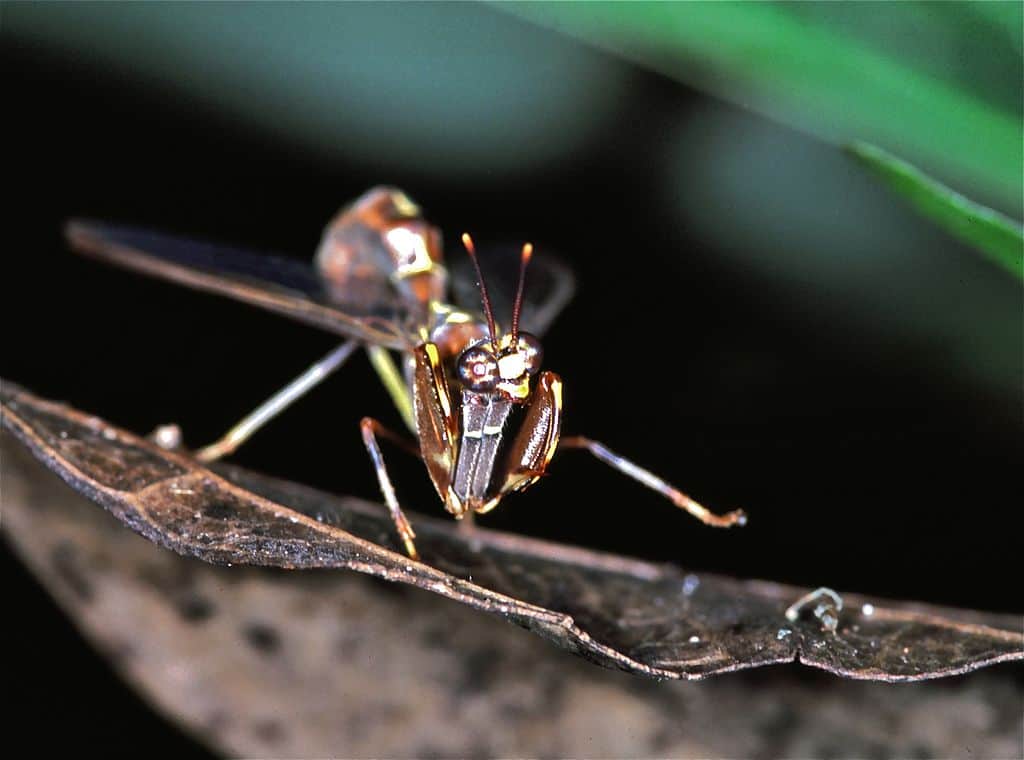
The Mantidfly represents one of nature’s most fascinating examples of convergent evolution, developing a form so unusual it appears to have been assembled from parts of entirely different insect orders. These remarkable creatures possess the raptorial (grasping) front legs of a praying mantis, attached to a body that otherwise resembles a wasp or lacewing, complete with four transparent, veined wings. This hybrid appearance makes them seem like artificial constructs rather than naturally evolved insects. Despite their resemblance to mantises, mantidflies are actually more closely related to lacewings and antlions. Their alien quality is enhanced by their peculiar hunting technique—they perch motionless with their front legs raised in a prayer-like position, then strike with lightning speed when prey comes within range, creating the unsettling impression of an insect performing a religious ritual before killing. Their life cycle adds another layer of otherworldliness: the larvae of many species are parasitoids that seek out spider egg sacs, where they consume the developing spiders while undergоing dramatic transformations between their larval stages. This complex life history, combined with their chimeric body structure combining features from entirely different insect groups, makes mantidflies appear more like science fiction creations than products of Earth’s evolutionary processes.
Giant Weta (Deinacrida)
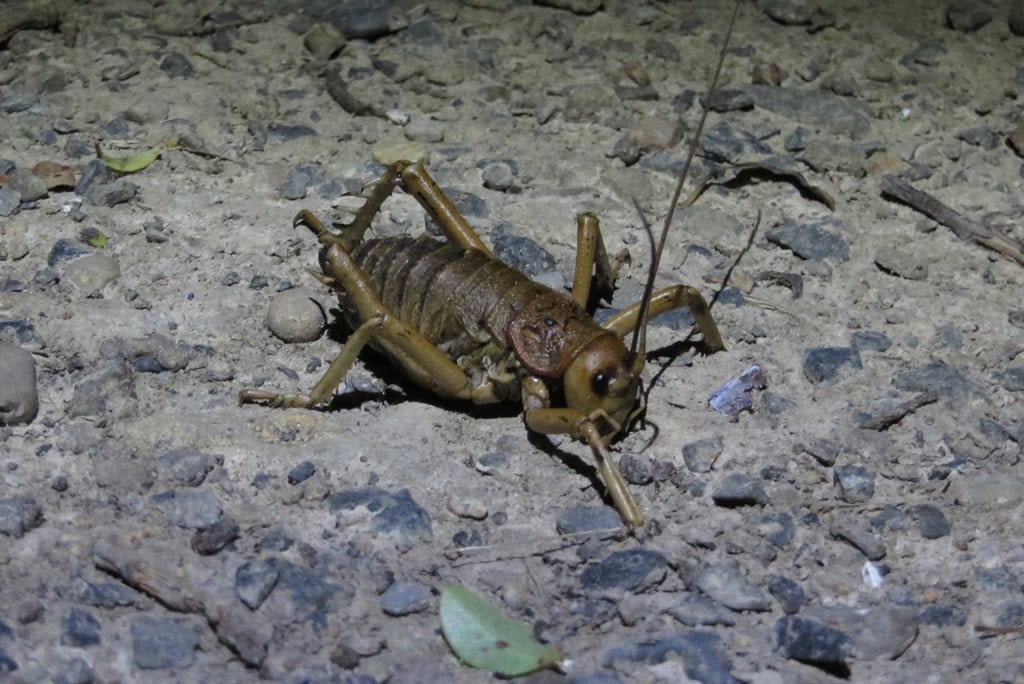
The Giant Weta stands as a living relic from prehistoric times, with an appearance so primordial and massive it seems to belong to another world entirely. Native to New Zealand, these extraordinary insects are among the heaviest in the world, with the largest species weighing up to 2.5 ounces (71 grams)—heavier than some small birds. Their prehistoric appearance is defined by their immense size, which can exceed 4 inches in body length with legs that extend their total span to nearly 7 inches. The weta’s body is covered in a heavily armored exoskeleton adorned with spikes, while its head features powerful mandibles and extraordinarily long antennae that can exceed the length of their bodies. What makes the giant weta particularly alien is its unusual respiratory system—visible along the sides of its abdomen are large openings called spiracles that connect to internal breathing tubes, giving the impression of mechanical ventilation ports. The absence of natural mammalian predators in New Zealand allowed these insects to evolve to gigantic proportions, essentially filling ecological niches that would typically be occupied by mice or small rodents. Unfortunately, with the introduction of rats and other mammalian predators by humans, most giant weta species have become endangered, with some existing only on small, predator-free offshore islands—isolated relics of an ancient insect lineage that developed in isolation for over 80 million years.
Treehopper (Membracidae family)
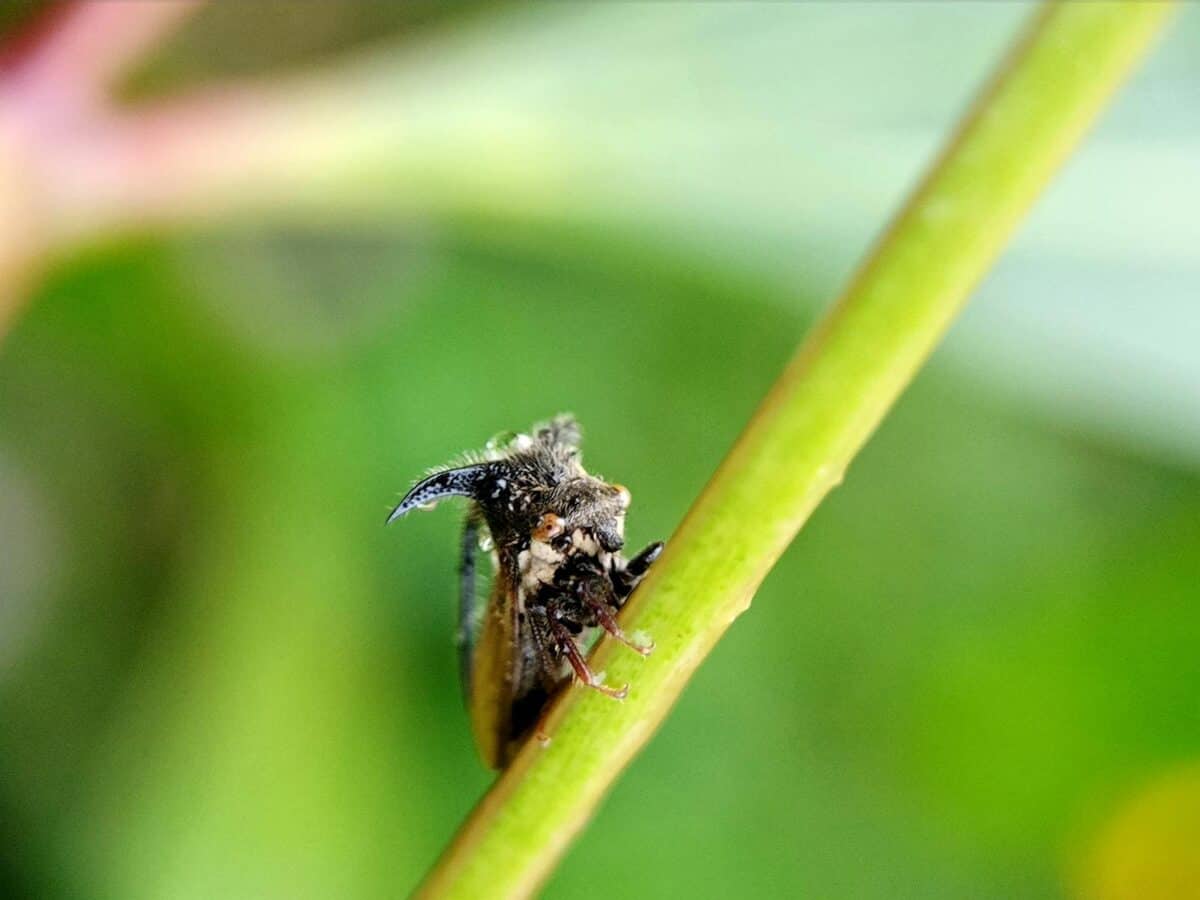
Treehoppers represent some of the most structurally bizarre insects on Earth, with elaborate protrusions that defy conventional insect anatomy and appear more like artistic sculptures than biological adaptations. These tiny insects, typically measuring less than half an inch, possess an enlarged structure called a pronotum that has evolved into fantastical forms including thorns, horns, balls, crescents, and elaborate branching shapes that can dwarf the insect’s actual body. The Brazilian treehopper (Bocydium globulare) demonstrates perhaps the most alien appearance, with a pronotum that extends upward into a thin stalk topped with several orb-like structures connected by fine filaments, resembling a microscopic planetary model or alien antenna. These structures, which differ dramatically between species, serve purposes ranging from camouflage to predator deterrence, though scientists still debate the exact functions of some of the more elaborate forms. Adding to their otherworldly nature, treehoppers communicate through substrate vibrations, essentially “singing” through plant stems in patterns inaudible to human ears but detectable by other treehoppers through specialized sensory organs in their legs. Many species have also developed mutualistic relationships with ants, which protect them in exchange for honeydew secretions—creating complex interspecies relationships that further highlight their unusual ecological niche. The extreme morphological diversity among treehoppers, with over 3,200 described species each bearing unique pronotum structures, makes them appear more like products of an alien designer’s.
Conclusion
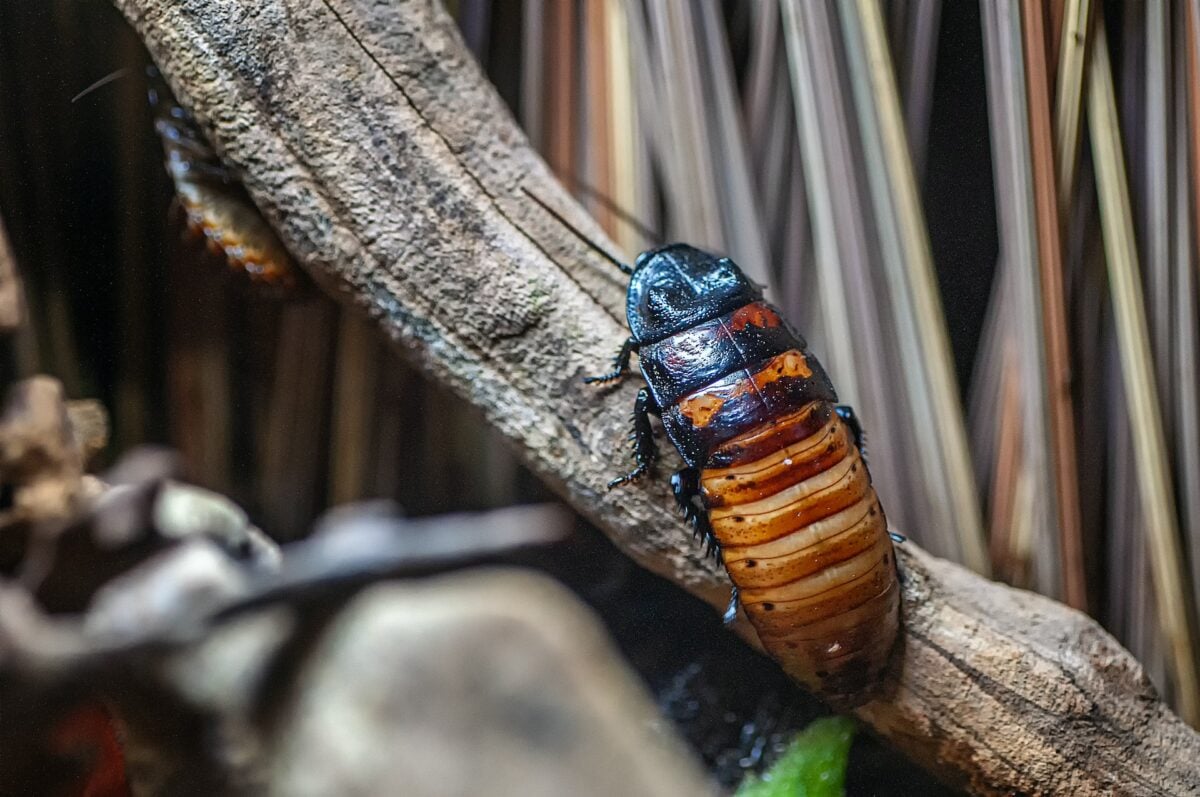
The insects showcased in this article demonstrate just how strange and wondrous life on Earth can be. From creatures that mimic flowers and leaves with uncanny precision to those with bizarre appendages and surreal behaviors, these 15 insects challenge our assumptions about what evolution can produce. Their alien-like appearances serve as a reminder that we don’t need to look to distant planets for life forms that defy imagination—some of the most extraordinary organisms are right here among us. These fascinating insects reveal the limitless creativity of nature, blurring the lines between science fiction and biological fact, and reminding us that our own world is still full of mysteries waiting to be discovered.
- 10 Animals That Risked Their Lives to Save Humans - August 9, 2025
- 14 Reasons Why Bears Are Afraid of Humans (Most of the Time) - August 9, 2025
- 11 Frogs That Look Too Weird to Be Real - August 9, 2025

